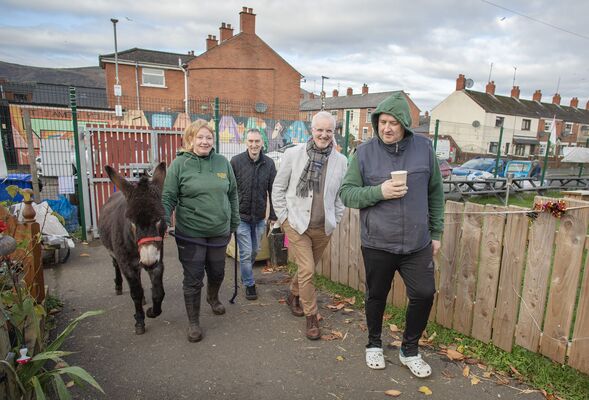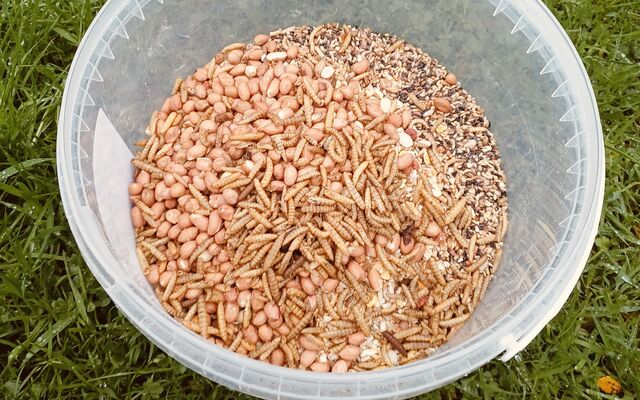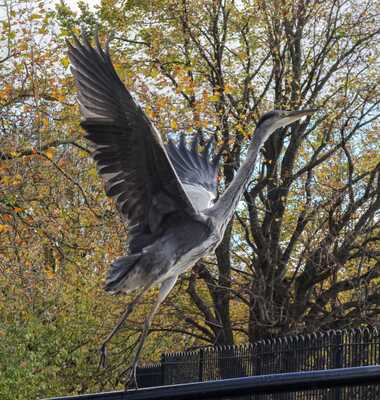IT was the biggest workout Dúlra has done in years. He thought Sunday’s trip to the lower slopes of Black Mountain with brother John would be a walk in the park, but it was anything but. Under the relentless July sun, it was more like taking part in a military training exercise.
The next day, every part of Dúlra’s body ached. The old fields here haven’t seen a cow in decades and nature has taken advantage. Plants are as high as your shoulder and the hedgerows have expanded into dense thickets. The old faded paths that we used to follow religiously have gone and we found ourselves beating our way through thick vegetation. And when we finally got through one field – both of us covered in nettle stings and cleg bites – and made it triumphantly into the next, we found the new field just as impenetrable as the last.
The cleg, by the way, is the local name for the notorious notch horned fly, which actually is the original Irish name (claig). The male is a harmless soul which feeds on nectar, but the female needs blood – usually Dúlra’s – which she laps up to nourish her developing eggs.
The fields here used to be our playground – we’d go up to them a few times a week, but it’s hard for Dúlra to explain exactly why. They just had a magical pull – maybe it was something to do with the adventure it always involved, you never knew what you’d see or find. Nature is as changeable as the weather – one day you’d walk along a hedgerow and see nothing, the next you’d find a bullfinch’s nest that was right before your eyes all along. The flowers, insects and birds come and go all the time, as changeable as the clouds above.
Of course, it was just good to get out of the city. There’s a freedom up here that’s special. We used to always take a break at the halfway point, plant ourselves on the grass and enjoy a smoke (sorry, ma!) while looking down on the city, watching the world go by. Today they’d probably call that mindfulness.
On Sunday the old fields were as gloriously secluded as ever. No-one walks here today – the farmers have long since given up on driving their cattle along the traffic-heavy Upper Springfield Road and so this wee network of half a dozen fields has been returned to nature. Maybe, like the adjacent Glenmona estate, which is in the process of being built, these fields are just waiting for what we call development.
But Dúlra hopes not. It’s great to have this greenbelt of countryside at the foot of the hills. They aren’t there for our benefit to be enjoyed like a park, but they are a much-needed haven for wildlife.
Rather than just grass, these fields have filled up with wildflowers. And foremost of them all is meadowsweet, airgead luachra (silver rush), in Irish. This member of the rose family has a fantastic scent and brushing past swathes of it here was like walking through the perfume aisle at Boots.
There weren’t many birds to be seen as the day was too hot even for them, but we were watched the whole time by the Black Mountain buzzard soaring overhead.
It’s sad that the estates below along the Glen Road are cut off from these fields and from the Black Mountain itself by gates, fences and barbed wire. Last year when Dúlra visited Carnmoney Hill he saw for the first time how things should be right across the Belfast Hills – the lucky residents and kids in this part of Rathcoole can just walk out their door and straight to the summit if they wish.
They are as much a part of the hill as the linnets and skylarks.
If you want to enjoy Black Mountain or Divis, you’ll have to use a combustion engine to carry you to a car park at the top. And if you haven’t got a car, well, the hills are not for you.
The wee fields at the foot of Black Mountain are only for the most hardy – perhaps foolhardy – visitors who are prepared to battle nettles, brambles and clegs.
And they're all the more special for it.
• If you’ve seen or photographed anything interesting, or have any nature questions, you can text Dúlra on 07801 414804.





